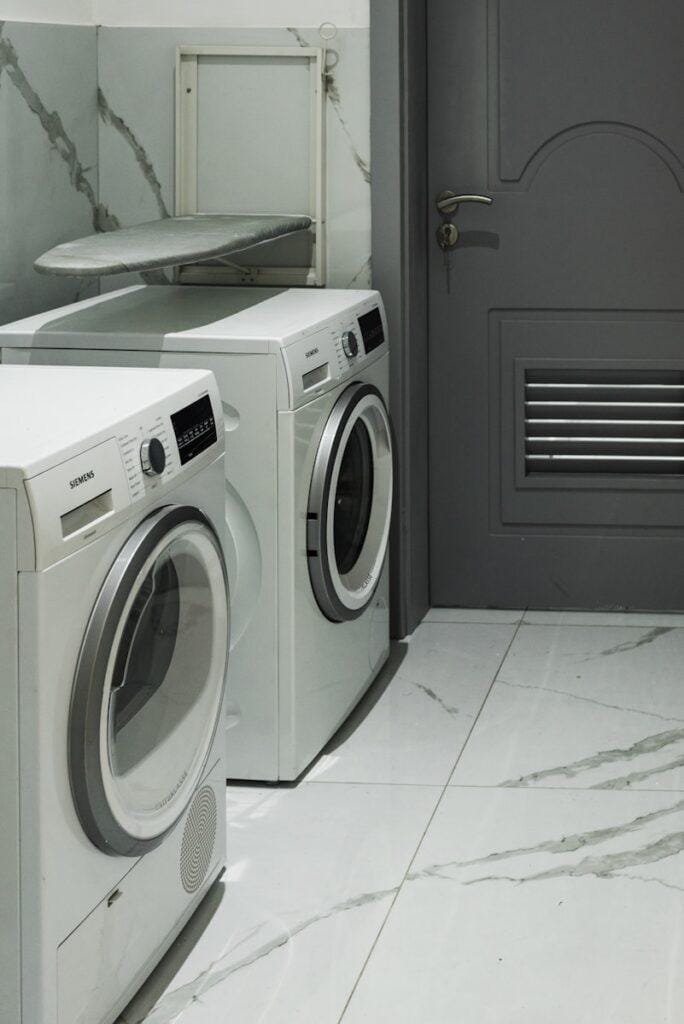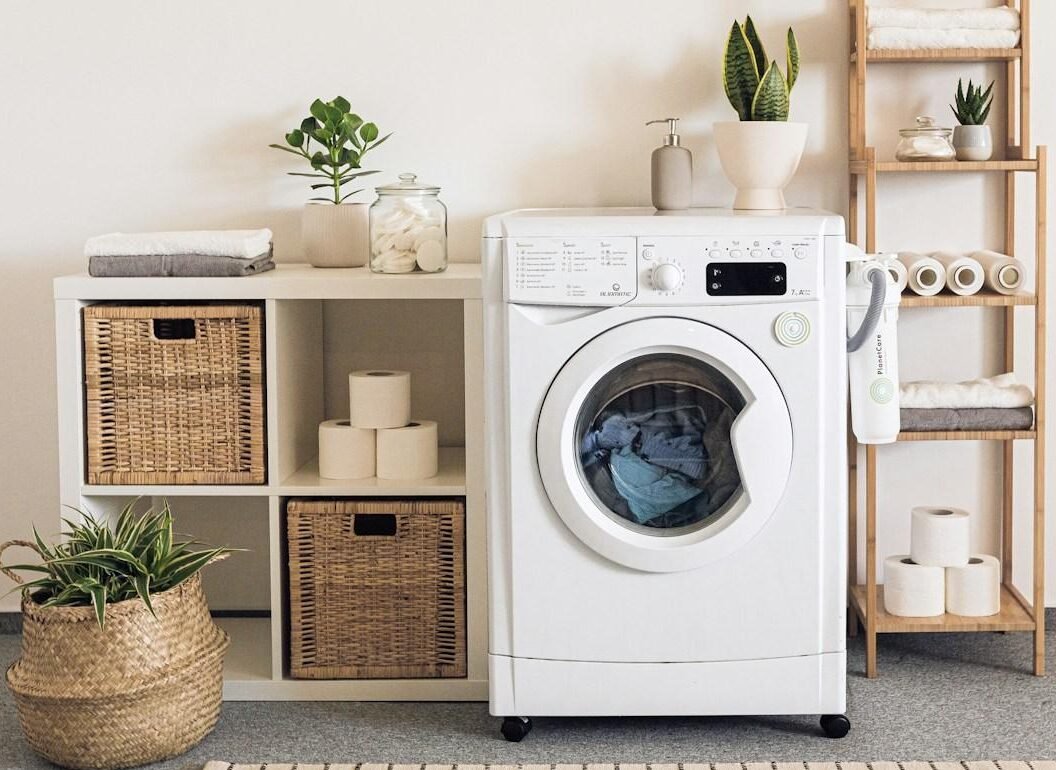Understanding Your Dryer: How a Dryer Repairman Works
A clothes dryer is a household appliance designed to remove moisture from clothing and other textiles, utilizing a combination of heat, airflow, and tumbling action. Understanding the basic functioning of a dryer is crucial for any homeowner, especially when it comes to identifying potential issues that may require the expertise of a dryer repairman.

Appliance Repairs
Call 1-833-422-6740
“Nationwide Repair Excellence”
The primary components of a dryer include the heating element, drum, motor, and exhaust system. The heating element generates warm air, which is then circulated through the drum by the motor. This drum is where wet clothing is placed, and as it spins, the clothing tumbles and is agitated, promoting even drying.
The importance of each part in this process cannot be overstated. For example, if the heating element fails, the air circulating in the drum will not be heated, resulting in a longer drying time or no drying at all.
The motor drives the rotation of the drum and is responsible for the movement that facilitates the drying process. If the motor malfunctions, it can prevent the drum from tumbling, which is critical for the efficient drying of clothes. Additionally, an effective exhaust system plays a vital role in removing moist air from the dryer. If the exhaust is blocked or damaged, it can lead to overheating and potentially cause a fire hazard, making it essential to regularly check this component.
To ensure your clothes dryer operates effectively, it is important to maintain and understand these components. Regular maintenance checks, such as cleaning the lint trap and inspecting hoses, can delay the need for professional dryer repair near me. In doing so, homeowners can prolong the lifespan of their dryers and minimize the chances of encountering major issues.
A blown thermal fuse indicates an overheating issue and serves as a warning sign of potential underlying problems, such as a malfunctioning thermostat or a blocked vent. Addressing these issues before replacing the fuse is crucial for the safe operation of the dryer.

Types of Dryers
When it comes to choosing a dryer, understanding the different types available can help you make an informed decision that best suits your needs. Here are the most common types of dryers:
- Electric Dryers: These are the most prevalent type of dryers found in households. Electric dryers use electricity to generate heat, which is then circulated to dry clothes. They are known for their ease of use and affordability, making them a popular choice for many homeowners. If you’re looking for a straightforward and cost-effective option, an electric dryer might be the best fit for you.
- Gas Dryers: Gas dryers use natural gas or propane to heat the air. They are generally more energy-efficient than electric dryers and can dry clothes faster, which can be a significant advantage for busy households. While the initial cost may be higher, the long-term savings on energy bills can make gas dryers a worthwhile investment.
- High-Efficiency Dryers: These dryers are designed with advanced technology to reduce energy consumption and dry clothes more quickly. Although they come with a higher price tag, the long-term savings on energy costs and the reduced environmental impact make high-efficiency dryers an attractive option for eco-conscious consumers.
- Ventless Dryers: Ideal for small spaces or apartments, ventless dryers do not require an external vent. Instead, they use a condenser to remove moisture from the air. Ventless dryers are known for their quiet operation and can be a great solution for homes where venting is not feasible.
By understanding the different types of dryers, you can choose the one that best fits your lifestyle and needs, whether you prioritize energy efficiency, speed, or space-saving features.
Samsung makes a good dryer. If you own a Samsung model, and you need an expert consider call US Appliance Repairs or a local Samsung dryer repairman.
Dryer Components
A dryer is a complex appliance with several key components working together to ensure your clothes come out dry and fresh. Here are some of the essential parts:
- Heating Element: The heating element is responsible for generating the heat needed to dry your clothes. In electric dryers, this component is powered by electricity, while in gas dryers, it is powered by natural gas or propane. A malfunctioning heating element can lead to longer drying times or no heat at all, necessitating a call to a dryer repair service.
- Drum: The drum is the large, cylindrical component that holds your clothes during the drying cycle. It rotates to tumble the clothes, ensuring even drying. If the drum stops spinning, it could be due to a broken belt or motor issue, both of which require professional appliance repair.
- Motor: The motor powers the drum and other moving parts of the dryer. If the motor fails, the drum won’t spin, and your clothes won’t dry properly. Unusual noises or a non-spinning drum are signs that you may need to contact a dryer repair service.
- Control Board: The control board is the electronic brain of the dryer, managing functions such as temperature, timer, and moisture levels. A faulty control board can lead to erratic behavior or unresponsive buttons, making it essential to seek reliable repairs from a qualified technician.
- Thermal Fuse: The thermal fuse is a critical safety device that prevents the dryer from overheating and potentially causing a fire. If the thermal fuse blows, the dryer will not operate until it is replaced. Regular maintenance and checks can help ensure this component functions correctly.
Understanding these components can help you troubleshoot minor issues and know when it’s time to call in a professional for more complex problems.
The Drying Cycle
The drying cycle in a clothes dryer is a carefully orchestrated process designed to remove moisture from your laundry efficiently. Here’s a breakdown of the stages involved:
- Pre-heating: Before the drying cycle begins, the dryer heats up to the selected temperature. This pre-heating stage ensures that the dryer is ready to start drying your clothes as soon as the cycle begins.
- Drying: During the drying stage, the dryer blows hot air through the drum, where your clothes are tumbling. The combination of heat and tumbling action helps to evaporate the moisture from the fabrics. The efficiency of this stage depends on the proper functioning of the heating element and the motor.
- Cooling: After the drying stage, the dryer enters a cooling phase. This step is crucial to prevent overheating and to make sure your clothes are not too hot to handle when you take them out. The cooling stage also helps to reduce wrinkles in your clothes.
- Moisture Sensing: Many modern dryers are equipped with moisture sensors that detect the moisture levels in your clothes. These sensors adjust the drying time accordingly, ensuring that your clothes are dried efficiently without wasting energy. This feature is particularly useful in high-efficiency dryers.
By understanding the drying cycle, you can better appreciate how your dryer works and identify any deviations that might indicate a problem requiring professional dryer repair services.
Common Causes of Dryer Malfunctions: Faulty Door Switch
Clothes dryers are essential appliances in homes, and their breakdown can lead to significant inconvenience. Understanding common causes of dryer malfunctions can help homeowners quickly diagnose problems and determine the appropriate action before seeking a dryer repairman. Below are several frequent issues that can lead to dryer failure.
Lint Build-up
One of the most prevalent problems is lint build-up. Over time, lint accumulates in the venting system, restricting airflow and causing the dryer to overheat or fail to dry clothes efficiently. If you notice that your dryer takes longer than usual to dry a load or that clothes are still damp after a cycle, it is wise to check for lint accumulation. Regular cleaning of the lint trap and venting system can help mitigate this issue.
Faulty Heating Elements
Another common cause is faulty heating elements. A dryer that fails to heat is an obvious sign of a heating element malfunction. Typically, homeowners might notice that their dryer runs but does not produce heat, resulting in damp clothes after a cycle. Testing the heating element with a multimeter can help identify this issue, which often necessitates calling for dryer repair near me.
If other components like the thermal fuse and radiant sensor are functioning properly, replacing the gas valve coils may be necessary to restore heat functionality to the dryer.
Check the Belt
Worn-out belts are also a frequent cause of malfunction. The drive belt enables the drum to spin; when it frays or breaks, the dryer may make a loud banging noise or fail to rotate at all. Homeowners can sometimes detect this by listening for unusual sounds or observing that the drum does not move during operation.
Electrical Issues
Electrical problems can also plague dryers, particularly issues with fuses or circuit breakers. A dryer that does not respond at all may indicate a blown fuse or tripped circuit. Additionally, a faulty door switch can prevent the dryer from starting and should be checked if the dryer fails to operate.
Control Panel Issues
Finally, control panel malfunctions can lead to unresponsive buttons or erratic behavior of the appliance, requiring professional assessment for effective repair.
Identifying these symptoms early on can save time and prevent further complications, making it easier to call an experienced dryer repairman when the need arises.

Appliance Repairs
Call 1-833-422-6740
“Nationwide Repair Excellence”
DIY Dryer Troubleshooting Tips
When faced with a malfunctioning clothes dryer, homeowners can often perform basic troubleshooting before contacting a dryer repairman or searching for “dryer repair near me.” Dryer troubleshooting is crucial for diagnosing and fixing common issues, such as when a dryer won’t generate heat or won’t start.
Check Power Supply
The initial steps often involve checking the power supply to ensure the dryer is receiving electricity. This can be accomplished by verifying that the unit is plugged in securely and inspecting the circuit breaker to ensure it has not tripped. If the dryer fails to start, this may be the easiest explanation to rectify.
Clean the Lint Trap
Another essential step is to clean the lint trap and venting system. A clogged lint trap can restrict airflow, leading to decreased efficiency and potential overheating, which can cause the dryer to stop working altogether. Cleaning the lint filter after every load is a good practice that should not be overlooked. Additionally, considering the dryer venting system, ensuring that it is free from obstructions will aid in maintaining proper airflow, reducing strain on the appliance.
It is also advisable for homeowners to pay attention to how the dryer is loaded. An overloaded dryer can lead to improper tumbling, compromising its ability to dry clothes effectively. On the other hand, underloading can equally be ineffective. For best results, loading should be balanced, allowing for adequate movement of garments within the drum.
Inspect the Dryer
Lastly, visually inspecting the dryer for any apparent signs of damage, such as frayed cords or broken door latches, can provide further insight into potential issues. Safety is paramount; if any extensive repair work is required or if you are unsure about the troubleshooting process, it is advisable to consult a professional dryer repairman.
These steps can save homeowners time and help identify minor issues that can lead to greater problems if left unaddressed. If the problem is more involved consider calling a local dryer repairman such as the good folks at US Appliance Repairs.

Safety and Efficiency
Ensuring the safety and efficiency of your dryer is paramount to prolonging its lifespan and preventing potential hazards. Here are some tips to keep your dryer running smoothly:
- Regular Maintenance: Regular maintenance is key to safe and efficient dryer operation. This includes cleaning the lint filter after every load, checking the dryer vent for obstructions, and inspecting hoses and connections. Regular maintenance can help you avoid costly appliance repairs and ensure your dryer operates at peak efficiency.
- Proper Installation: Proper installation is crucial for safe and efficient dryer operation. Ensure that your dryer is installed on a level surface and that the vent is properly connected to allow for adequate airflow. Improper installation can lead to overheating and increased wear and tear on the appliance.
- Energy Efficiency: When it comes to dryer repair, energy efficiency is an important consideration. Look for energy-efficient models that use advanced technology to reduce energy consumption. These dryers not only save you money on utility bills but also have a lower environmental impact.
- Safety Features: Modern dryers come equipped with various safety features, such as thermal fuses and automatic shut-off mechanisms. These features help prevent accidents and ensure safe operation. Regularly check these safety components to ensure they are functioning correctly.
By following these tips, you can maintain the safety and efficiency of your dryer, reducing the need for frequent repairs and extending the life of your appliance.
When to Call a Professional for Dryer Repair Services
Determining when to seek professional assistance for dryer repair can be essential for both safety and efficiency. In many cases, a DIY approach may initially seem appropriate; however, certain signs indicate that hiring a qualified technician is advisable.
When to Call Dryer Repairman
For instance, if your dryer is failing to heat adequately, producing unusual noises, or showing warning lights, it might be time to call a dryer repairman. These issues often require specialized knowledge and tools to address effectively, making professional intervention a prudent choice. Professional appliance service is convenient and efficient, as expert technicians handle repairs by ordering necessary parts and ensuring quality work.
Consider Safety of the Repair
Another critical factor to consider is the safety of the repair process. If you detect a burning smell, see smoke, or notice any signs of electrical malfunction, it is essential to disconnect the appliance and contact a professional immediately. Such problems may stem from faulty wiring, which can pose risks not only to the appliance but also to the household. A certified technician will have the expertise to inspect and resolve potential hazards safely.
Ask Questions
When selecting a repair service, it is vital to ask the right questions to ensure you are hiring a reputable technician. Inquire about their experience with dryer repair, whether they hold relevant certifications, and if they offer a warranty on their services.
Additionally, asking for references or checking online reviews can provide insight into the quality of their work and customer service. It is also important to choose the best dryer repair service available, as their team of highly skilled technicians can quickly diagnose and remedy various dryer issues.
Search Online
To find dryer repair services nearby, consider searching online for “dryer repair near me” to generate a list of local professionals. Reviewing their qualifications, such as certifications or affiliations with recognized industry organizations, can further assure you of their competence.
Ultimately, choosing a well-reviewed and qualified dryer repairman can facilitate a swift and effective resolution to your dryer issues, ultimately prolonging the life of your appliance.
When to Replace Your Dryer
Deciding when to replace your dryer can be challenging, but certain signs can indicate it’s time for a new appliance. Here are some factors to consider:
- Age: If your dryer is more than 10 years old, it may be time to consider a replacement. Older dryers are often less efficient and more prone to breakdowns, leading to higher repair costs and energy bills.
- Repair Cost: When the cost of repairing your dryer exceeds half the price of a new one, it might be more economical to replace it. Frequent repairs can add up, making a new, more reliable dryer a better investment in the long run.
- Energy Efficiency: Newer dryers are designed with energy efficiency in mind, using advanced technology to reduce energy consumption. If your current dryer is not energy-efficient, replacing it with a modern model can save you money on utility bills and reduce your environmental footprint.
- Performance: If your dryer is not performing well, it may be time for a replacement. Signs of poor performance include longer drying times, reduced heat, and increased noise levels. A new dryer can offer improved performance and reliability, ensuring your clothes are dried quickly and efficiently.
By considering these factors, you can make an informed decision about when to replace your dryer, ensuring you have a reliable and efficient appliance that meets your needs.

